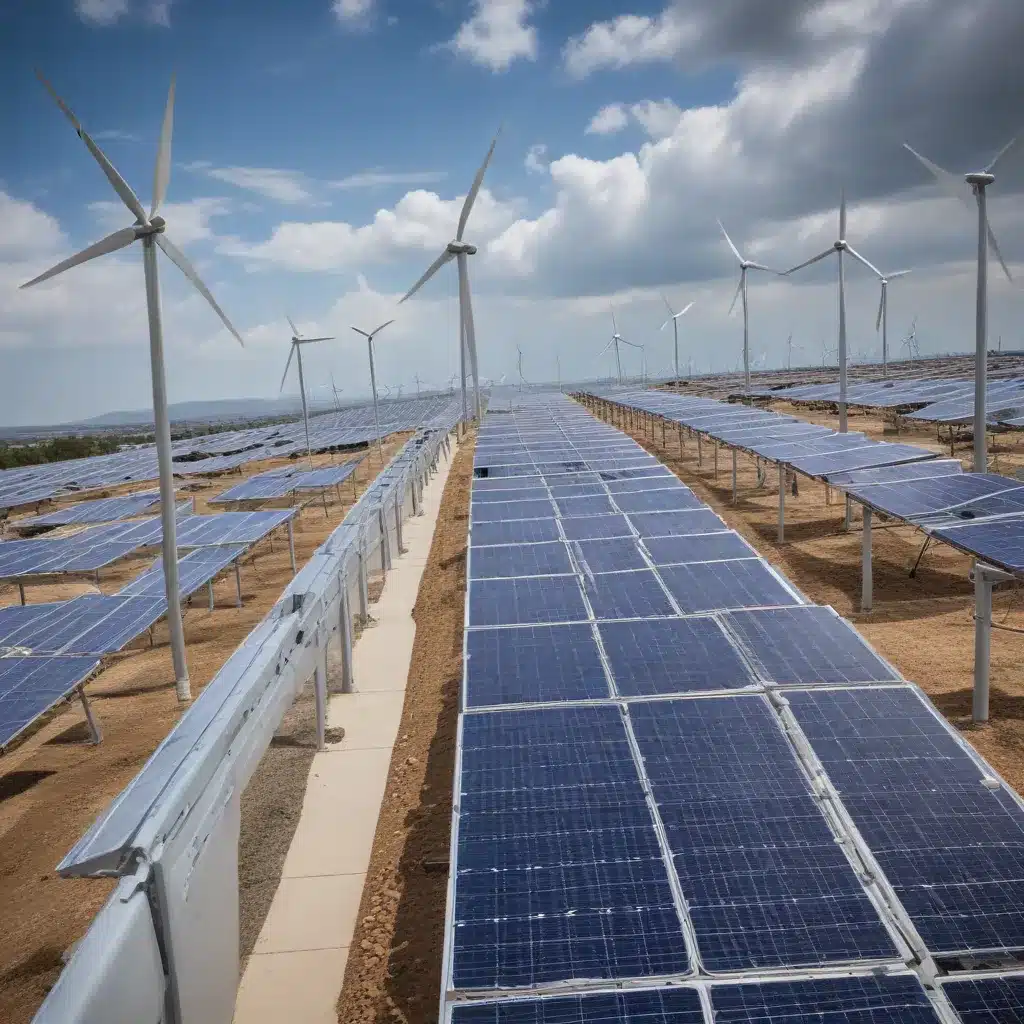
Enhancing Grid Resilience with Microgrids: Integrating Renewable Energy and Energy Storage
Europe’s energy landscape is undergoing a transformative shift, as the continent accelerates its transition to clean, sustainable sources of electricity. At the forefront of this transition are microgrids – localized, interconnected energy systems that are revolutionizing the way we generate, distribute, and manage power. These innovative solutions are not only enhancing grid resilience but also driving the integration of renewable energy and energy storage technologies, positioning Europe as a global leader in the pursuit of a net-zero future.
Renewable Energy Integration: Powering the Microgrid Revolution
The integration of renewable energy sources, such as solar and wind power, is a cornerstone of Europe’s clean energy strategy. Microgrid architectures are perfectly suited to harness the benefits of these intermittent, distributed resources, ensuring a reliable and resilient power supply.
Solar Power Integration: The falling costs and increasing efficiency of photovoltaic (PV) technology have made solar power a prevalent component of microgrid systems across Europe. By incorporating on-site solar generation, microgrids can not only reduce their reliance on the main grid but also mitigate the impact of grid disturbances or power outages. The ability to seamlessly transition between grid-connected and islanded modes allows microgrids to maintain critical operations, even when the larger grid experiences disruptions.
Wind Power Integration: Similarly, the integration of wind turbines into microgrid systems has gained traction, particularly in coastal and offshore regions of Europe. By combining wind energy with other distributed resources, microgrids can leverage the complementary nature of these renewable sources, ensuring a more consistent and reliable power supply. The National Renewable Energy Laboratory (NREL) has been at the forefront of testing and validating the performance of hybrid microgrid systems that integrate wind, solar, and energy storage technologies.
Energy Storage Technologies: The Cornerstone of Microgrid Resilience
Energy storage plays a crucial role in enhancing the resilience and flexibility of microgrid systems. By storing excess energy generated from renewable sources, microgrids can effectively manage fluctuations in supply and demand, ensuring a reliable and uninterrupted power supply.
Battery Energy Storage: Lithium-ion, nickel-cadmium, and lead-acid batteries are among the most commonly deployed energy storage technologies in microgrid applications. These systems can provide a range of services, from voltage and frequency regulation to peak shaving and microgrid critical load support. NREL has collaborated with various partners to develop and test advanced battery energy storage systems, validating their performance and integration within microgrid environments.
Flywheel Energy Storage: Flywheels are another energy storage solution gaining traction in microgrid applications. These mechanical systems store energy in the form of kinetic energy, offering rapid response times and high-power output capabilities. Flywheels can complement battery storage, providing short-duration, high-power support to maintain grid stability and power quality during grid disturbances.
Thermal Energy Storage: The integration of thermal energy storage, such as chilled water or molten salt systems, can also enhance the overall efficiency and resilience of microgrid operations. By storing thermal energy, microgrids can better manage their heating and cooling loads, reducing the reliance on the main grid and improving their overall energy management.
Microgrid Architecture: Seamless Islanding and Grid-Tie Capabilities
The architectural design of microgrids is a critical factor in their ability to enhance grid resilience. Microgrids can operate in both grid-connected and islanded modes, allowing them to maintain power supply even when the larger grid experiences disruptions.
Islanding and Grid-Tie Capabilities: Microgrids are equipped with advanced control systems and power electronics that enable them to seamlessly transition between grid-connected and islanded modes of operation. This flexibility allows microgrids to isolate themselves from the main grid, ensuring that critical loads within the microgrid continue to receive power during outages or grid disturbances.
Distributed Generation Management: Microgrids also excel at managing the integration of diverse distributed energy resources, including traditional generators, renewable energy sources, and energy storage systems. By optimizing the coordination and control of these assets, microgrids can maximize the utilization of local generation, reduce dependence on the main grid, and enhance overall system resilience.
Microgrid Control Systems: The heart of a microgrid’s resilience lies in its control systems, which monitor, manage, and optimize the various energy resources within the system. These advanced control algorithms and communication platforms ensure the seamless integration of all components, enabling rapid response to changes in demand, supply, or grid conditions.
Benefits of Microgrid Adoption: Powering a Resilient and Sustainable Future
The widespread adoption of microgrids in Europe is yielding tangible benefits, from improved power reliability to reduced carbon emissions and cost savings.
Improved Power Reliability: By isolating critical loads from the main grid, microgrids can maintain uninterrupted power supply during grid disturbances or outages. This enhanced resilience is particularly valuable for essential services, such as hospitals, data centers, and military installations, where power reliability is of utmost importance.
Reduced Carbon Emissions: The integration of renewable energy and energy storage technologies within microgrids enables a significant reduction in carbon emissions, aligning with Europe’s ambitious climate goals. By reducing the reliance on fossil fuel-based generation, microgrids are contributing to the decarbonization of the energy sector.
Cost Savings and Economic Impacts: Microgrids can also generate cost savings for end-users through various mechanisms, such as peak shaving, demand response, and participation in energy markets. These economic benefits, coupled with the improved power reliability, make microgrids an attractive solution for a wide range of applications, from commercial and industrial facilities to remote communities.
As Europe continues to navigate the energy transition, the role of microgrids in enhancing grid resilience and driving the integration of renewable energy and energy storage technologies will only grow in importance. Through innovative public-private partnerships, policy frameworks, and continued research and development, Europe is poised to lead the global charge towards a more resilient, sustainable, and decarbonized energy future. The European Future Energy Forum (europeanfutureenergyforum.com) is at the forefront of this transformative shift, providing a platform for industry experts, policymakers, and green energy advocates to collaborate and shape the energy landscape of tomorrow.






